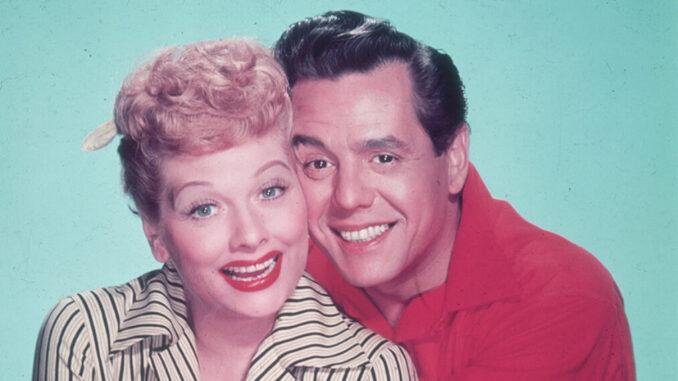
When most fans picture I Love Lucy, they immediately think of the charming red heart logo with the show’s title in looping script. That simple image has become synonymous with television’s golden age. But what if we told you that this wasn’t how the show originally began?
Hidden in television’s early history lies a nearly forgotten chapter: the original openings to I Love Lucy, which featured not romance, but cigarettes. This “lost opening” has since faded from public memory, replaced by the now-iconic heart. Yet, its story reveals how deeply advertising shaped the birth of American television — and why this piece of entertainment history nearly vanished forever.
Cigarettes Before Comedy
When I Love Lucy premiered in 1951, television was still in its infancy. Shows didn’t survive on network budgets alone; they depended heavily on corporate sponsorship. For Lucille Ball and Desi Arnaz’s sitcom, the sponsor was Philip Morris cigarettes, one of the biggest tobacco brands of the time.
Instead of the heart logo, early broadcasts opened with an animated sequence: a pack of Philip Morris cigarettes marching across the screen while a voice cheerfully promoted the brand. Sometimes, Desi Arnaz himself would appear as Ricky Ricardo, playfully encouraging viewers to “call for Philip Morris.” These sponsor-driven openings weren’t optional — they were central to how shows were produced and presented.
How It Vanished From Public Memory
By the mid-1960s, cigarette advertising on television began to face increasing scrutiny. Changing public health attitudes, combined with new regulations, led to the gradual removal of cigarette branding from TV. As I Love Lucy entered syndication, CBS replaced the cigarette-themed opening with the red heart logo, which has since become one of the most recognized visuals in television history.
For decades, most viewers never knew the original version existed. To them, the heart wasn’t a replacement — it was the beginning. The cigarette openings were quietly locked away, almost as if they had never happened.
Rediscovery and Historical Importance
It wasn’t until the release of special DVD box sets and documentaries that fans were reintroduced to the lost openings. Media historians were thrilled, not only because of the novelty but because these clips offered a unique snapshot of early television culture. They highlighted how intertwined advertising and entertainment once were — to the point where characters would break the fourth wall to directly pitch products.
These lost segments also shed light on the challenges faced by Lucille Ball and Desi Arnaz as pioneers. They weren’t just actors; they were producers working within the constraints of a sponsor-driven system. Negotiating with advertisers became as much a part of their job as delivering laughs.
Beyond Nostalgia: What It Tells Us About Television
The rediscovery of the lost opening goes beyond nostalgia. It forces us to recognize how television, even at its most creative, has always been shaped by commerce. The fact that one of the most iconic sitcoms of all time once opened with a cigarette ad reminds us that art and business have always been intertwined in American media.
Moreover, it speaks to the power of reinvention. By replacing the cigarette animations with the heart logo, I Love Lucy gained an opening that was timeless, wholesome, and instantly recognizable. The show evolved with the times, and in doing so, secured its place as a piece of pure Americana.
A Legacy That Lives On
Today, the “lost opening” serves as both a curiosity and a cautionary tale. It shows how cultural values shift, how entertainment adapts, and how even the smallest details — like an opening sequence — can reveal broader truths about society.
For Lucille Ball and Desi Arnaz, the decision to blend business with art was never simple. Yet, the very fact that their show could transcend its sponsor-driven origins to become a cultural landmark is a testament to their vision.
Behind the laughter of I Love Lucy, even in its forgotten cigarette openings, lies a bigger story: a story about television, America, and the way history remembers what it wants to — while letting the rest quietly fade away.
